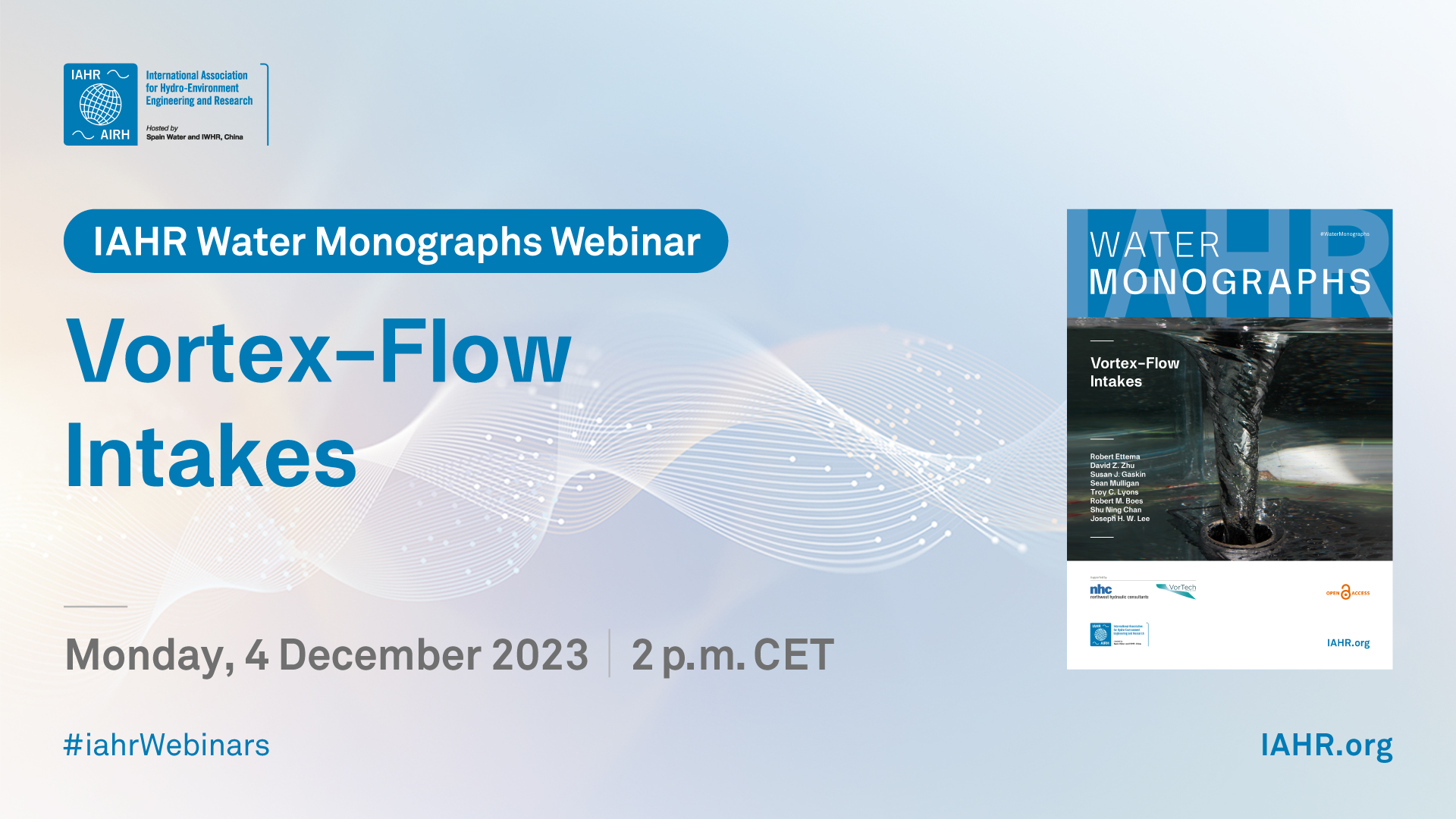Watch on demand! Webinar on Vortex- Flow Intakes
Event Home Watch on Demand! Download Water Monograph
Summary
The design of hydraulic structures entails putting various flows to use. For example, flows used in water conveyance, flows that create favorable flow conditions for this or that purpose, and flows that dissipate flow energy. Though in some situations certain flows are considered undesirable, in other situations such flows may be considered to have the qualities desired. This consideration of flow undesirability or desirability is especially true of vortices and flow swirl at flow into intakes. In some situations, vortex formation and swirl consume energy and cause undue vibration, reducing the intake’s discharge capacity. However, for other flow situations (usually drainage flows), vortex formation and energy dissipation have exactly the qualities needed for intake performance.
The webinar focused on vortex-flow intakes, describing designs for drainage-flow dropstructures for which the intake deliberately spins flow to create a stable vortex motion that dissipates flow energy and thereby reduces air entrainment and consequent bulking of flow. Dropstructures typically involve dropping drainage flows down relatively large changes in elevation connected to underground conduits and storage reservoirs, whose designs seek to reduce flow bulking by air. The webinar also covered the undesirable features of vortices and swirl, notably for reservoir intakes (especially hydropower intakes) and pump intakes when energy dissipation is to be minimized and vibration to be eliminated. Energy dissipation by an intake means less energy is available for a hydropower turbine, or more energy needed to run a pump. Vibration causes increased wear on the turbine or pump.
The webinar was based on the IAHR Water Monograph Vortex-Flow Intakes, which is an update of IAHR’s original monograph Swirling Flow Problems at Intakes, coordinated and edited by Jost Knauss and published in 1987. A new feature the present Water Monograph (and Webinar) describe is the use of numerical methods to model flows through vortex-flow intakes and downstream of such intakes. Three-dimensional numerical flow models, or computational fluid dynamics (CFD), are modeling alternatives that have evolved significantly over the past twenty years. The affordability and accessibility of CFD for simulating the flow features of vortex-flow intakes have been enhanced by the dramatic growth in computational power and the development of several commercial and open-source CFD codes such as Flow3D, Fluent, CFX, Star CCM+, and OpenFoam etc. There has been widespread use of CFD in vortex intake research since the early 2000s. The webinar briefly summarized advances in the numerical modeling of flow in vortex intakes through a selection of key studies of free-surface swirling flows and approaches to meshing, unsteadiness, and turbulence.
The webinar also highlighted areas of vortex-flow intakes that require further development. Those areas included continued work on the designs of vortex-flow intakes, the increased us of vortex flow intakes as a component of “sponge cities” (cities that collect and treat drainage flows), developments in numerical modeling and physical modeling too, aeration modeling, instrumentation, prevention of unwanted vortices and swirl at intakes. The webinar also highlighted the role of IAHR’s Water Monograph series a s concise, well-illustrated presentations of information on a variety of topics important to water engineering and science.
